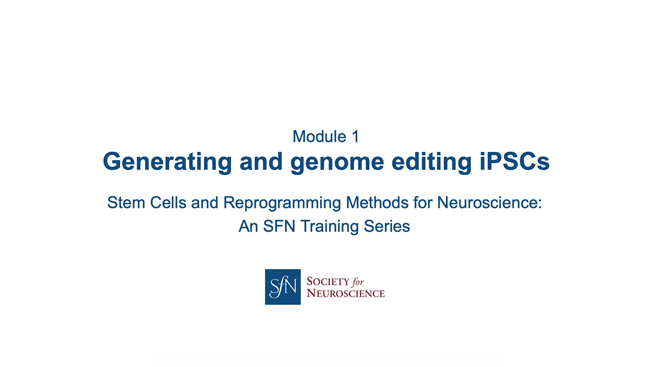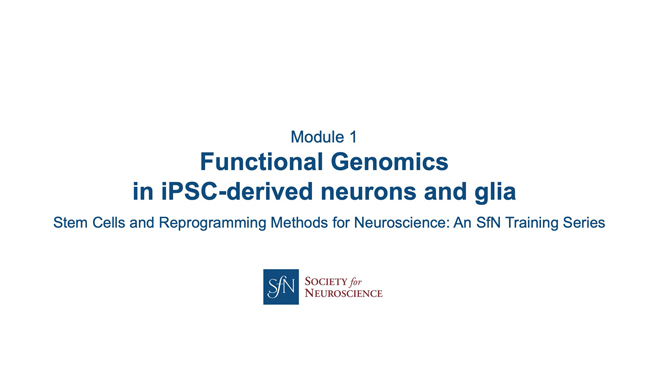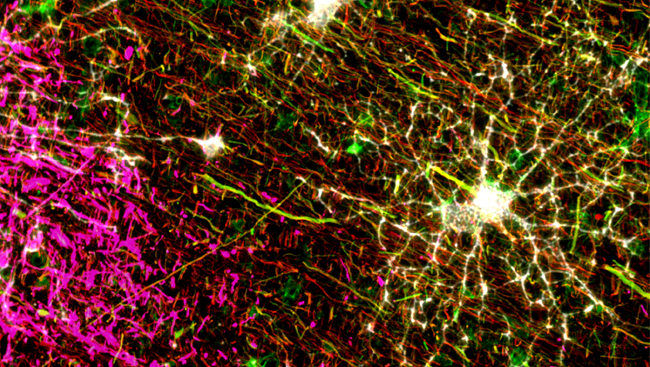Module 1: Generating and Genome Editing iPS Cells
Learn basic approaches for generating, reprogramming, and genetically screening induced pluripotent stem cell-derived (iPSC) neurons and glia.
 Valentina Lo Sardo, PhD Scripps Research |
 Martin Kampmann, PhD University of California, San Francisco |
After reviewing Module 1, participants at all career stages should be able to:
- Explain the basics of reprogramming.
- Describe how to make a study design considering possible limitations and proper number of samples.
- Summarize how to perform a reprogramming experiment.
- Summarize how to validate and establish iPSC lines.
- Outline genome editing techniques and how to proceed to design and perform an experiment.
- Explain CRISPR-based approaches to probe gene function in iPSC-derived neurons and glia.
- Describe different types of large-scale genetic screens in iPSC-derived neurons and glia.
-
 Module 1A: Generating and Genome Editing iPS Cells
Module 1A: Generating and Genome Editing iPS CellsIn this presentation, Valentina Lo Sardo will introduce the generation of iPSCs from somatic cells and methods of genome editing. Specifically, Lo Sardo will:
- Introduce reprogramming, including different cell sources and methods for generating iPSCs.
- Describe experimental design and procedure to generate, validate, and maintain iPSCs from peripheral blood mononuclear cells (PBMCs), including general considerations on source of variability in iPSCs.
- Introduce genome editing techniques.
- Explain experimental design and procedure to perform genome editing using TALENs, including general considerations on study design and type of controls.
-
 Module 1B: Functional Genomics in iPSC-Derived Neurons and Glia
Module 1B: Functional Genomics in iPSC-Derived Neurons and GliaIn this presentation, Martin Kampmann will introduce functional genomics approaches in iPSC-derived neurons and glia. Specifically, Kampmann will:
- Cover CRISPRi (interference) and CRISPRa (activation) control of gene expression.
- Describe how to implement CRISPRi/a in iPSC-derived cells.
- Introduce large-scale genetic screens based on survival, fluorescent readouts of cell function, single-cell RNA sequencing, and high-content imaging.
- Use of functional genomics to understand mechanisms underlying disease-linked genes and potential therapeutic strategies.









